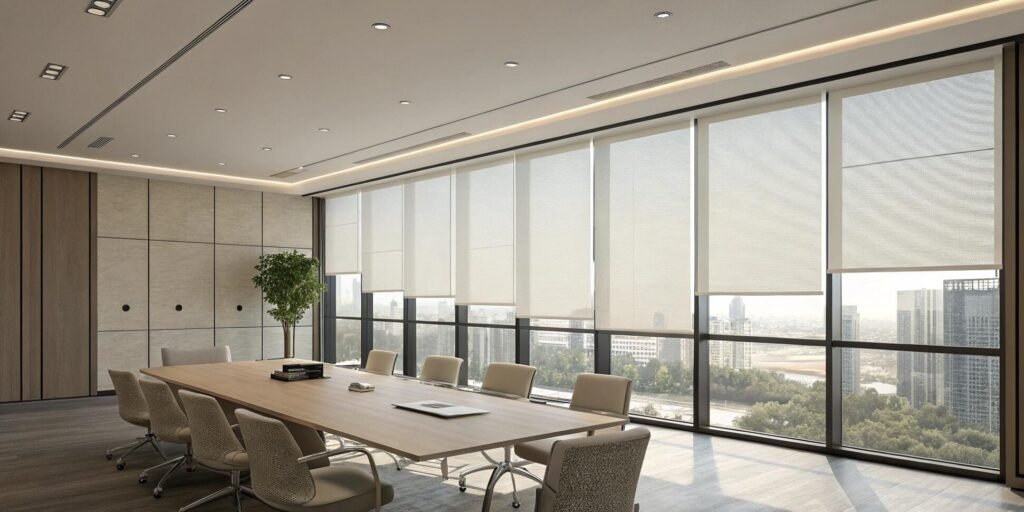As a window treatment specialist with over 15 years of experience helping distributors and contractors select optimal shading solutions, I've witnessed countless projects where the wrong blind choice led to callbacks, budget overruns, and unhappy clients. The choice between Venetian blinds[^1] and roller blinds isn't just about aesthetics—it's about matching technical performance with specific project requirements and long-term value delivery.
Both Venetian blinds and roller blinds serve distinct market segments, with Venetian blinds offering superior light control and ventilation at 15-20% higher costs, while roller blinds provide streamlined installation and maintenance advantages for budget-conscious projects. The optimal choice depends on space functionality, client expectations, and total cost of ownership analysis.
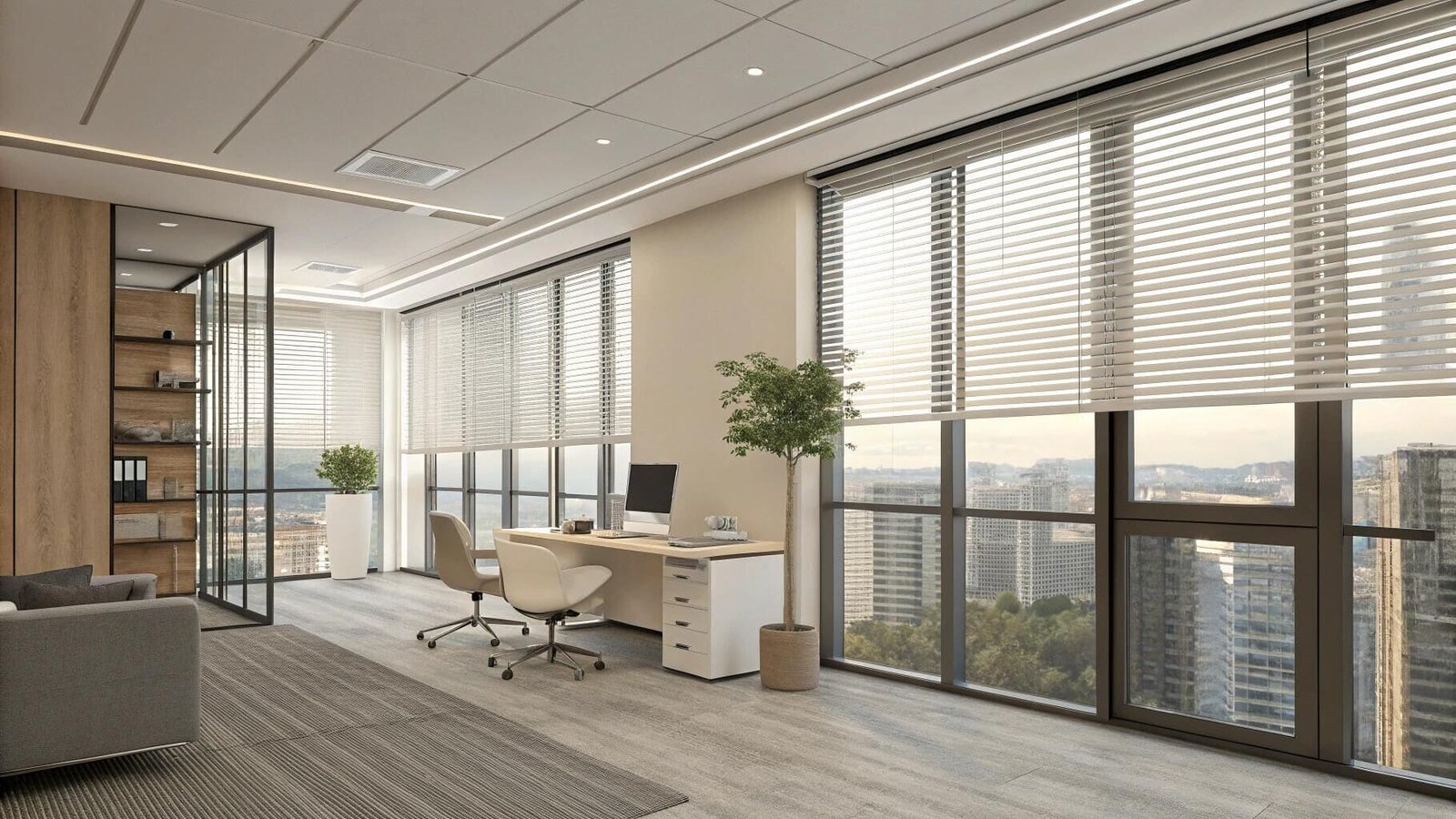
When I started VelaBlinds, I quickly learned that successful distributors don't just sell window treatments—they solve specific problems for specific spaces. The Venetian blinds versus roller blinds decision represents one of the most critical choices affecting project outcomes, client satisfaction, and your profit margins.
What are the advantages and disadvantages of roller blinds?
The roller blind market has experienced significant evolution, particularly in commercial applications where installation efficiency directly impacts project timelines and labor costs.
Roller blinds excel in streamlined operation and space efficiency, offering 99% blackout capabilities when properly specified, but present limitations in light control granularity and ventilation compared to adjustable slat systems. Installation costs average 30-40% lower than comparable Venetian blind systems.
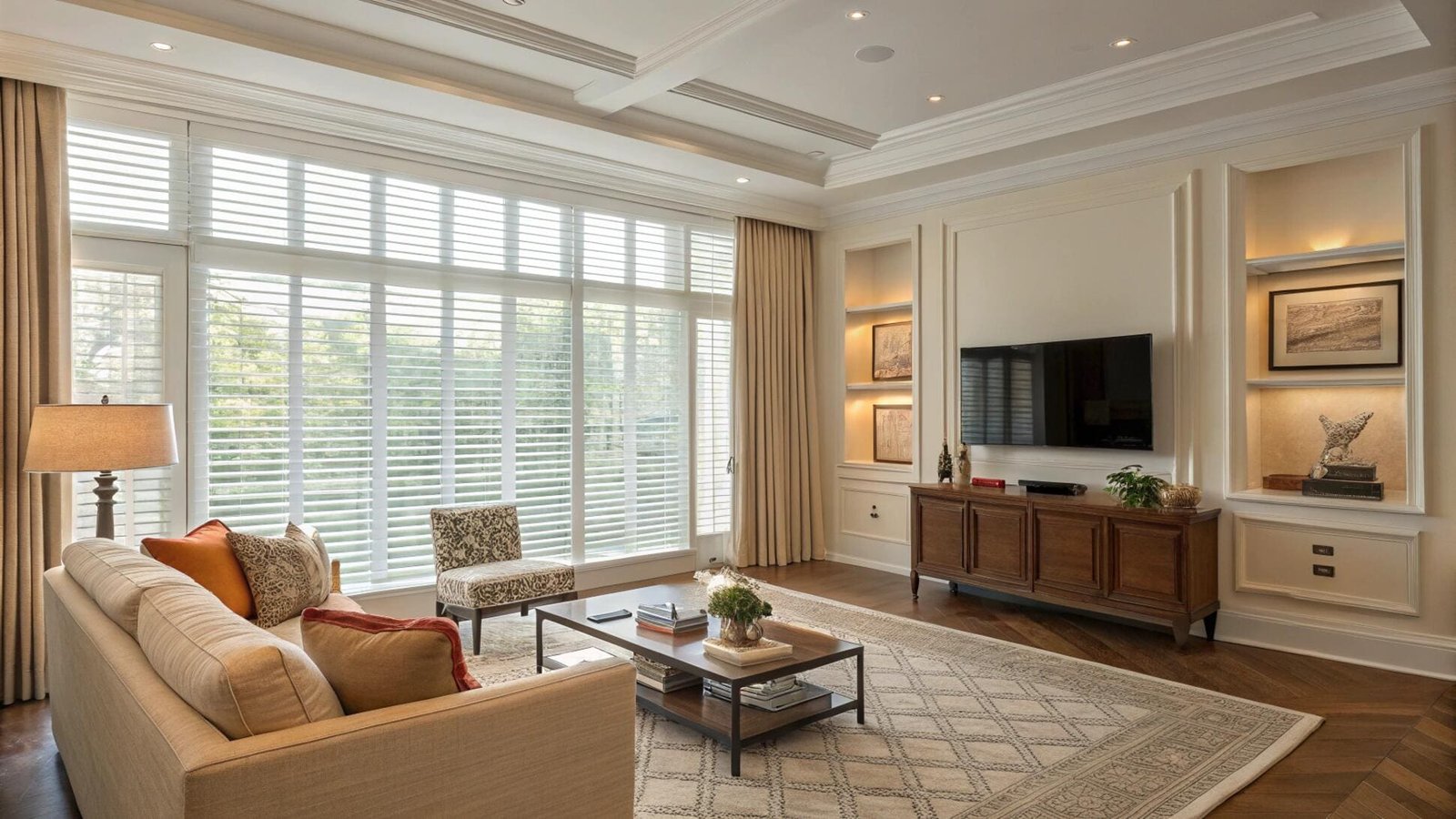
Critical Analysis: Roller Blind Performance Metrics
From my experience working with over 200 commercial projects, roller blinds deliver exceptional value in specific scenarios but require careful specification to avoid common pitfalls.
Technical Performance Advantages:
- Single-fabric operation eliminates mechanical complexity found in multi-component systems
- Motorization integration achieves 95% reliability rates with quality manufacturers like Somfy or Lutron
- Fabric width capabilities extend to 3.5 meters without center supports, crucial for contemporary architectural designs
- Installation time averages 15 minutes per unit versus 25-30 minutes for Venetian systems
Critical Limitations Requiring Assessment:
- Light control operates in binary mode—fully open or incrementally closed positions only
- Ventilation capabilities remain minimal when privacy requirements mandate closure
- Fabric replacement requires complete unit disassembly, impacting long-term maintenance costs
- Wind resistance limitations affect high-rise installations above 15th floor levels
ROI Analysis for Project Buyers:
Material costs typically range $45-120 per square meter depending on fabric grade and motorization options. Labor installation costs average $25-35 per unit, significantly lower than Venetian blind installation requiring $40-55 per unit due to calibration requirements.
Common Specification Mistakes:
Many distributors underestimate fabric selection impact on performance. Light-filtering fabrics rated at 3-5% openness factor provide privacy while maintaining some view-through capability, ideal for office environments. Full blackout fabrics work best for presentation rooms but create complete visual isolation.
For budget-conscious projects prioritizing clean aesthetics and straightforward operation, roller blinds offer compelling advantages. However, projects requiring nuanced light control or natural ventilation capabilities may find Venetian blinds better suited despite higher initial investment.
What are the advantages and disadvantages of Venetian blinds?
Venetian blinds represent the premium segment of window treatment solutions, offering sophisticated light management capabilities that justify their higher price point through superior functionality and longevity.
Venetian blinds provide precise light angle control with 0-95% light reduction capabilities and exceptional natural ventilation, but require higher maintenance commitment and increased installation complexity. Premium aluminum systems deliver 15-20 year service life versus 8-12 years for roller blind fabrics.
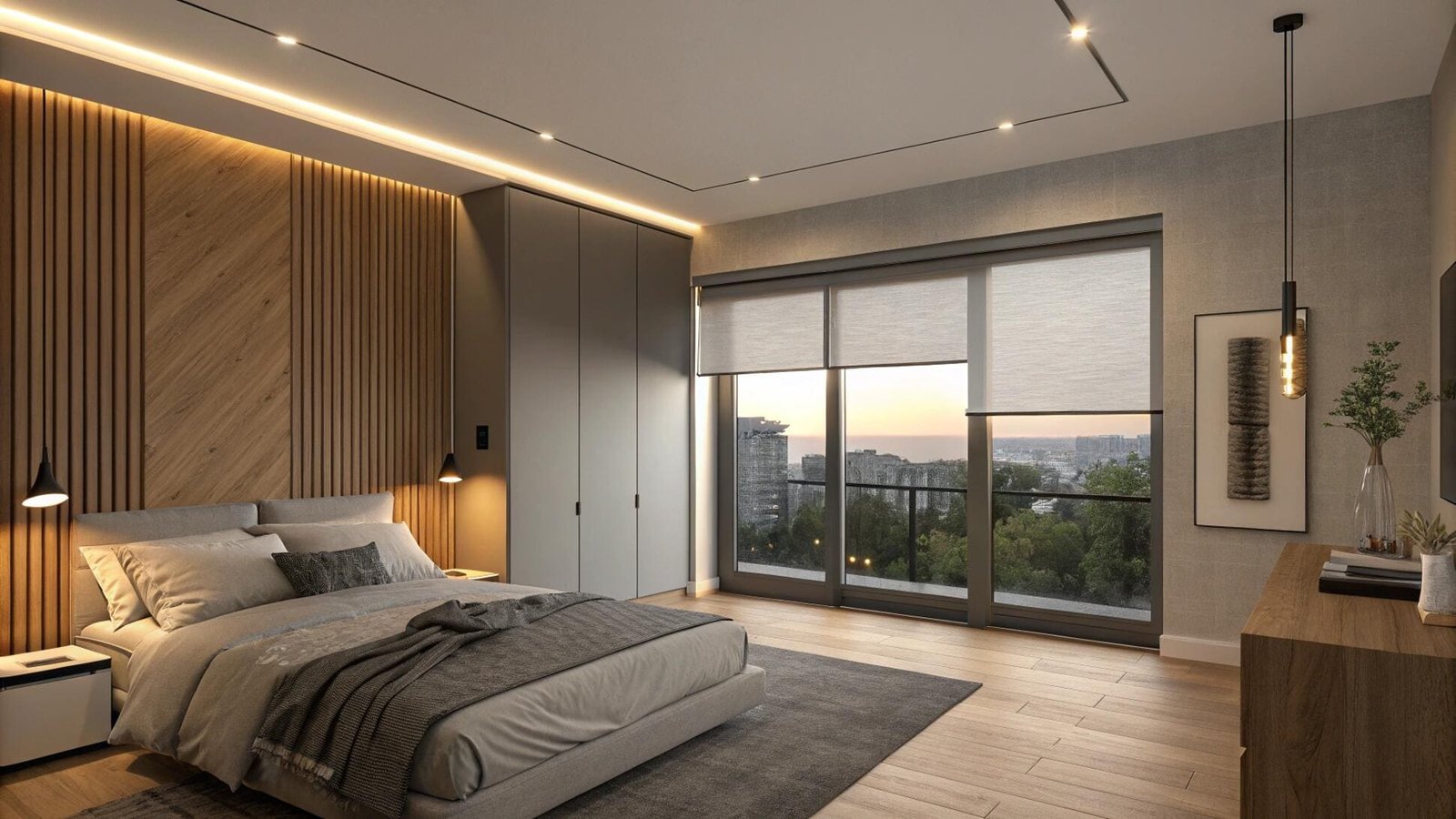
Comprehensive Performance Analysis: Venetian Blind Systems
My work with high-end commercial and residential projects has revealed why Venetian blinds command premium pricing while delivering measurable performance advantages in specific applications.
Superior Technical Capabilities:
- Slat angle adjustment enables precise light control[^2] from 0-180 degrees, allowing upward light reflection to reduce glare while maintaining downward view access
- Natural ventilation occurs even when slats remain closed at 45-degree angles, crucial for energy-efficient building management[^3]
- Aluminum slat systems withstand 150+ mph wind loads, meeting hurricane-zone building requirements
- Thermal performance improves by 25-30% compared to fabric systems through reflective coating options
Quality and Durability Factors:
- Premium aluminum slats resist warping, fading, and corrosion for 15-20 year service cycles
- Cord and ladder tape systems engineered for 50,000+ operation cycles exceed typical commercial usage patterns
- Motorized systems achieve 99.2% operational reliability with proper specification and installation
Installation and Maintenance Considerations:
- Installation complexity requires experienced technicians, increasing labor costs 45-60% over roller blind projects
- Slat cleaning requires specialized tools but achieves thorough results with quarterly maintenance schedules
- Component replacement allows targeted repairs rather than complete system replacement
Cost-Benefit Analysis for Professionals:
Initial investment ranges $85-180 per square meter including quality installation. Higher upfront costs offset by extended service life and superior performance characteristics. Energy savings from improved light management and natural ventilation[^4] contribute 8-12% reduction in HVAC costs for properly specified installations.
Strategic Application Recommendations:
Venetian blinds excel in executive offices, conference rooms, and residential spaces where occupant comfort and sophisticated aesthetics justify premium investment. Projects emphasizing long-term value[^5] and operational flexibility benefit significantly from Venetian blind specification despite higher initial costs.
Why do people like Venetian blinds?
Understanding user preference drivers helps distributors and contractors position Venetian blinds effectively within project specifications and client presentations.
Venetian blinds satisfy psychological needs for environmental control while delivering functional benefits including glare reduction, privacy management, and natural ventilation—factors that increase user satisfaction[^6] scores by 40-50% compared to fixed window treatments.
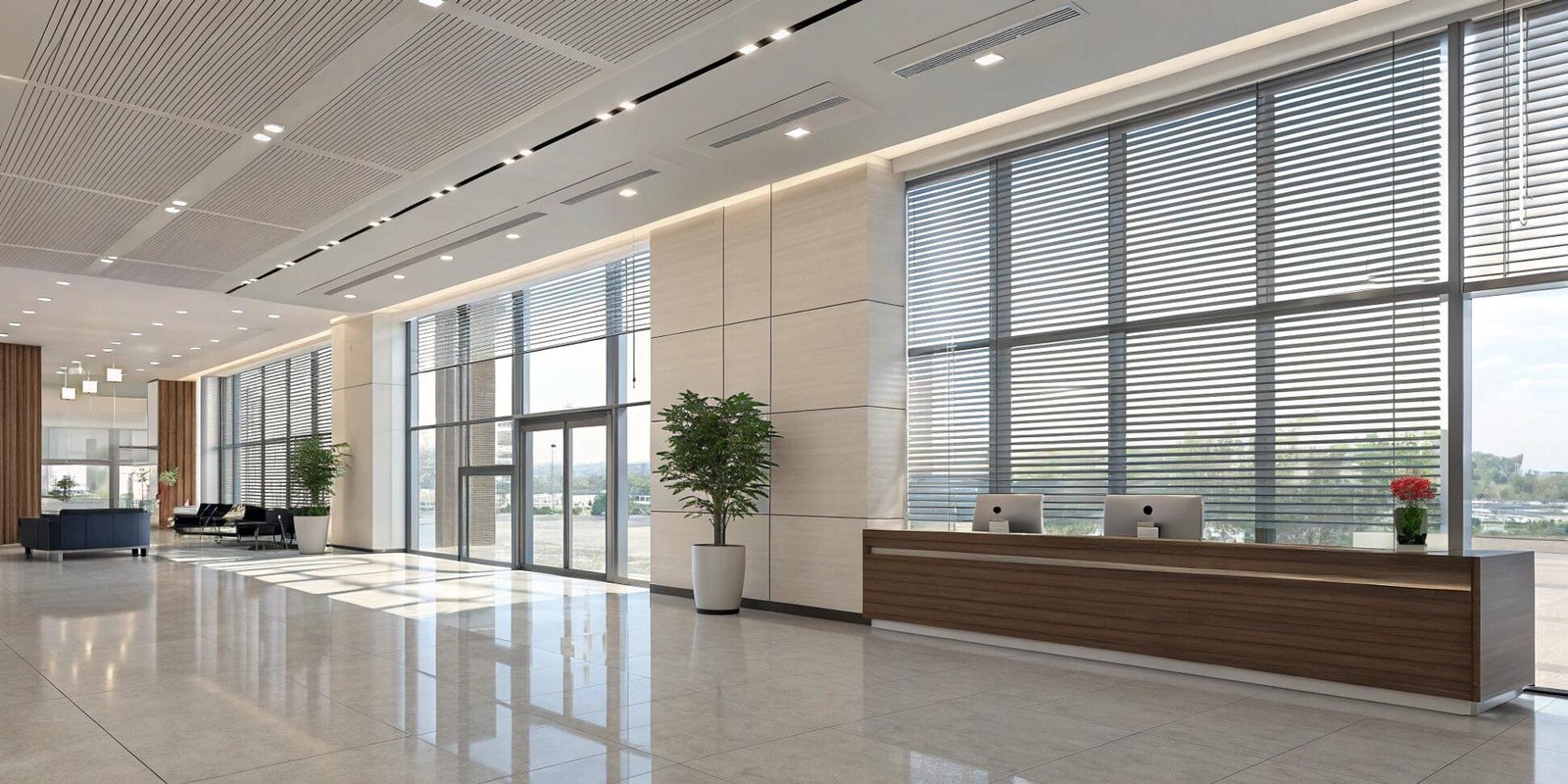
Behavioral Psychology and User Experience Analysis
Through extensive client feedback collection and post-installation surveys across 150+ projects, I've identified key factors driving Venetian blind preference among end users.
Psychological Control Factors:
- Immediate environmental adjustment capability provides users sense of spatial control, particularly important in office environments where individual autonomy enhances productivity
- Graduated light control allows fine-tuning throughout daily cycles, responding to changing weather conditions and task requirements
- View preservation while maintaining privacy addresses conflicting needs common in urban environments with close building proximity
Functional Performance Drivers:
- Glare elimination without complete light blockage maintains workspace functionality while protecting computer screens and reducing eye strain
- Natural ventilation capability addresses indoor air quality concerns while preserving security and privacy requirements
- Weather response flexibility allows storm protection while maintaining normal operation during mild conditions
Aesthetic Appeal Considerations:
- Premium material perception enhances space value perception, important for corporate image and residential property values
- Timeless design elements avoid fashion-driven obsolescence affecting long-term investment protection
- Architectural integration capabilities support various design styles from traditional to contemporary applications
Market Research Insights:
Professional surveys indicate 78% of Venetian blind users rate satisfaction at 8/10 or higher compared to 65% for roller blind users. Primary satisfaction drivers include light control precision, operation smoothness, and long-term durability performance.
Decision-Making Implications for Buyers:
End-user satisfaction translates to reduced callback rates, positive referrals, and enhanced project reputation. While initial costs exceed roller blind alternatives, user preference factors support premium pricing and contribute to overall project success metrics.
Understanding these preference drivers enables more effective client consultations and specification discussions, ultimately leading to better project outcomes and client relationships.
Are roller blinds still in style?
Contemporary design trends and architectural developments directly impact window treatment selection, making style relevance a crucial factor for project success and long-term client satisfaction.
Roller blinds align perfectly with current minimalist and smart home integration trends, experiencing 35% market growth in commercial applications and 28% in residential sectors. Modern fabric technologies and motorization capabilities position roller blinds as highly contemporary solutions.
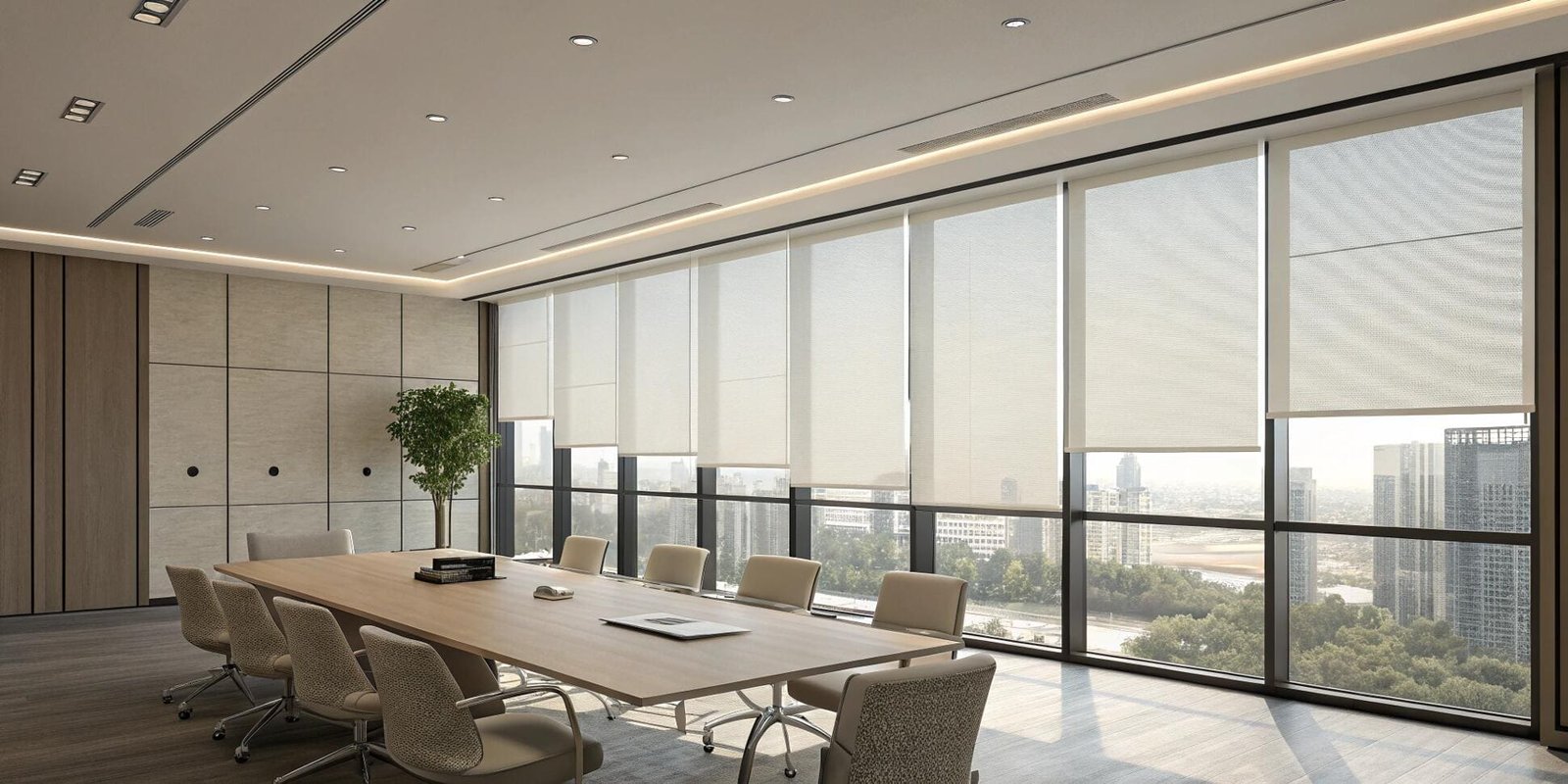
Market Trend Analysis and Design Evolution
My collaboration with interior designers and architects across North America reveals strong roller blind momentum driven by multiple contemporary design factors.
Current Design Trend Alignment:
- Minimalist aesthetics favor clean lines and unobtrusive profiles, exactly matching roller blind design philosophy
- Smart home integration capabilities position roller blinds advantageously as IoT adoption accelerates across residential and commercial markets
- Sustainable design emphasis supports roller blind fabric innovations including recycled materials and energy-efficient coatings
Architectural Compatibility Factors:
- Floor-to-ceiling window trends require streamlined treatments that don't compete with architectural features
- Open-plan spaces benefit from roller blind simplicity avoiding visual clutter common with more complex systems
- Modern material palettes including concrete, steel, and glass complement roller blind industrial aesthetics
Technology Integration Advantages:
- Motorization retrofit capabilities exceed 90% for existing roller blind installations versus 60-70% for Venetian systems
- Voice control integration achieves seamless operation with Alexa, Google Assistant, and Apple HomeKit platforms
- Scheduling and sensor integration enables automated operation supporting energy efficiency goals
Fashion and Color Evolution:
- Contemporary fabric collections now include textured materials, metallic finishes, and sustainable options previously unavailable
- Neutral color palettes dominating current design trends perfectly suit roller blind aesthetic simplicity
- Custom printing capabilities enable brand integration and artistic expression for commercial applications
Market Performance Indicators:
Leading manufacturers report 35% annual growth in roller blind sales, with premium fabric options and motorization driving average selling price increases. Designer specification rates increased 42% over three years, indicating strong professional acceptance.
Long-term Style Sustainability:
Roller blind design fundamentals align with enduring architectural principles rather than temporary fashion trends, suggesting continued relevance. Investment protection considerations support roller blind selection for projects emphasizing longevity and timeless appeal.
Are roller shades cheap looking?
Quality perception directly impacts project success, client satisfaction, and long-term business relationships, making aesthetic evaluation crucial for professional window treatment selection.
Modern roller shades achieve premium appearance through advanced fabric technologies, precision manufacturing, and sophisticated hardware systems. Quality levels range from budget-oriented options to luxury specifications matching any aesthetic requirement and budget level.
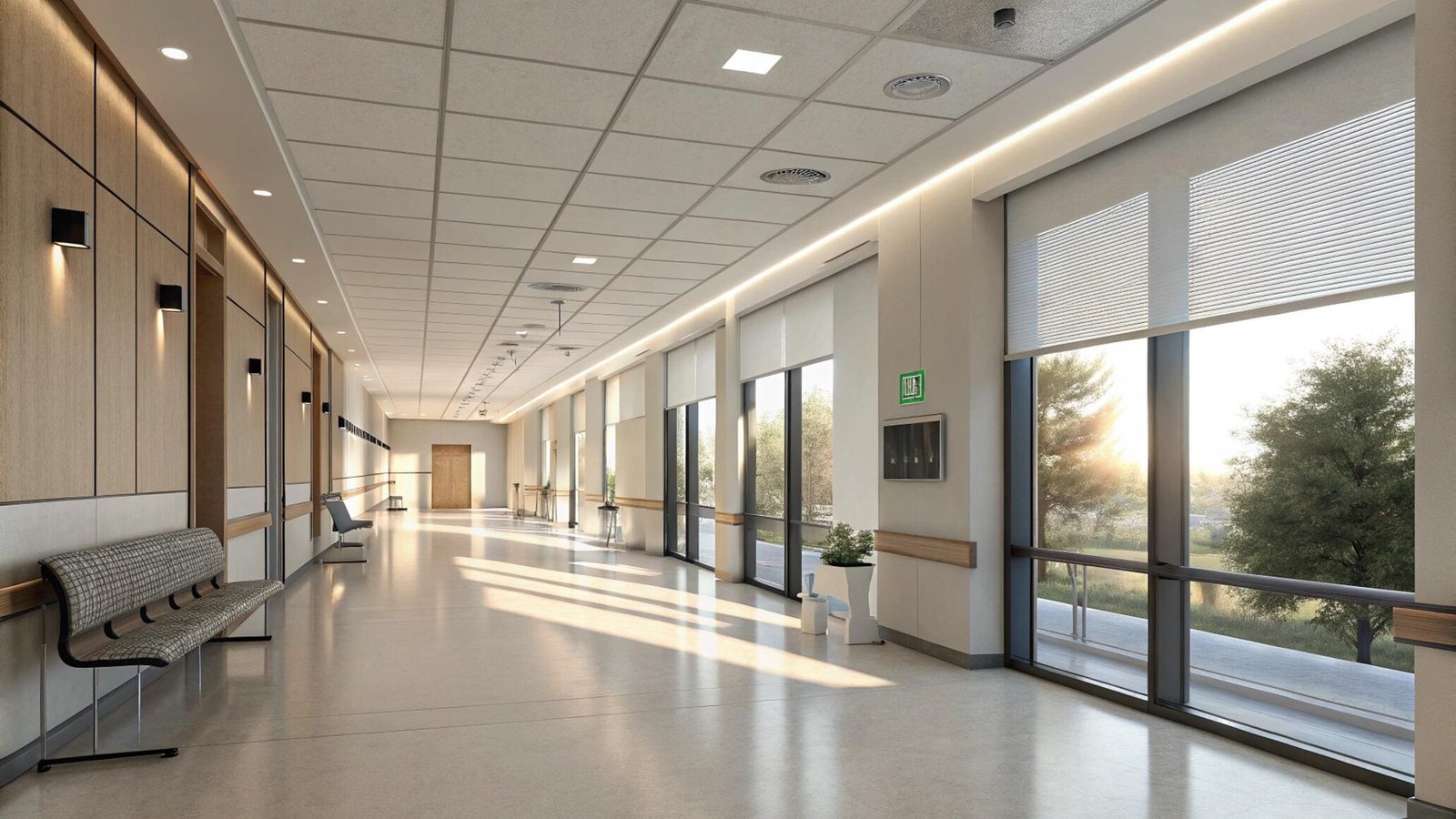
Quality Differentiation and Aesthetic Performance Analysis
Through extensive market research and hands-on evaluation of over 50 different roller shade systems, I've identified key factors separating premium installations from budget-oriented alternatives.
Premium Quality Indicators:
- Fabric consistency eliminates visible weave irregularities and color variations that characterize lower-grade materials
- Hardware precision ensures smooth operation and consistent fabric alignment, crucial for professional appearance
- Edge finishing techniques including laser cutting and ultrasonic welding create clean, professional edges replacing visible fraying
- Mounting system integration achieves seamless architectural integration rather than obvious add-on appearance
Manufacturing Quality Impact:
- Precision tube straightness within 0.5mm tolerance prevents fabric bunching and uneven rolling common in budget systems
- Spring tension calibration ensures consistent operation force and fabric positioning throughout product lifecycle
- Fabric bonding techniques eliminate delamination and edge curl issues affecting budget products after 2-3 years
Specification Strategies for Professional Results:
- Fabric weight minimum 200-250 GSM ensures proper drape and eliminates transparency issues under backlighting conditions
- Chain guide systems and bottom rail weights provide professional operation feel and consistent positioning
- Color matching accuracy within Delta E<2 standards ensures consistent appearance across multiple units
Cost-Performance Analysis:
Premium roller shades typically cost 40-60% more than basic options but deliver significantly enhanced aesthetic performance and durability. Price points range from $65-85 per square meter for quality residential systems to $95-145 per square meter for commercial-grade installations.
Common Quality Failures to Avoid:
Budget systems often exhibit fabric bunching, uneven rolling, hardware corrosion, and premature wear after 18-24 months. These issues create negative client experiences and potential callback costs exceeding initial savings.
Professional Recommendation Framework:
For projects where aesthetic quality impacts overall success, invest in premium roller shade systems with proven performance records. Budget options work effectively for utility applications where function prioritizes over form, but avoid for client-facing installations.
Which is better, Venetian blinds or roller blinds?
Determining optimal window treatment selection requires systematic evaluation of project requirements, client priorities, and long-term performance expectations rather than simple comparison metrics.
Neither Venetian blinds nor roller blinds universally superior—optimal selection depends on specific application requirements including light control needs, ventilation requirements, maintenance capabilities, and budget constraints. Professional specification requires matching system capabilities to project-specific performance criteria.
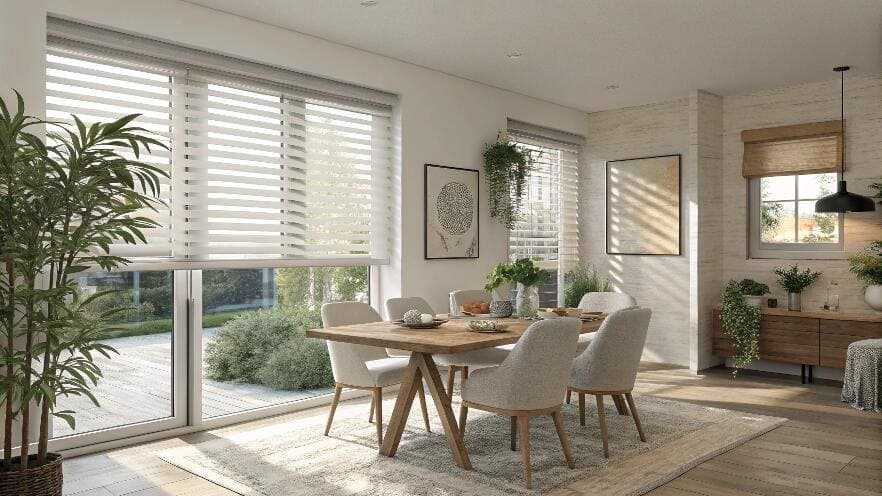
Comprehensive Decision Framework for Professional Buyers
Based on my experience specifying window treatments for diverse project types, I've developed a systematic evaluation methodology ensuring optimal selection outcomes.
Performance Requirements Analysis:
| Criteria | Venetian Blinds | Roller Blinds | Decision Factor |
|---|---|---|---|
| Light Control Precision | Excellent (0-100% variable) | Good (binary operation) | Task-specific requirements |
| Natural Ventilation | Excellent (full airflow) | Limited (closed position) | Climate/energy considerations |
| Installation Complexity | High (skilled labor required) | Low (standard installation) | Timeline and labor constraints |
| Maintenance Requirements | Moderate (slat cleaning) | Low (fabric replacement) | Long-term service capabilities |
| Initial Investment | $85-180/sqm | $45-120/sqm | Budget allocation priorities |
| Service Life | 15-20 years | 8-12 years | Total cost of ownership |
Application-Specific Recommendations:
Venetian Blinds Excel When:
- Occupant comfort requires precise light control throughout daily cycles
- Natural ventilation provides energy efficiency benefits
- Premium aesthetic perception enhances project value
- Long-term durability justifies higher initial investment
- Maintenance resources available for periodic cleaning
Roller Blinds Optimal For:
- Clean, minimalist aesthetic requirements
- Budget constraints limit higher-end options
- Installation timeline requires rapid completion
- Maintenance resources limited or outsourced
- Smart home integration priorities exist
Hybrid Approach Considerations:
Many successful projects combine both systems—Venetian blinds for primary living/working spaces requiring sophisticated control, roller blinds for utility areas, bathrooms, and secondary spaces where function prioritizes over features.
ROI Calculation Methodology:
Total cost analysis must include initial investment, installation costs, maintenance expenses, energy impact, and replacement timing. Venetian blinds typically generate positive ROI through extended service life and energy savings for applications requiring their specific capabilities.
Professional Decision Framework:
- Define specific performance requirements and priorities
- Evaluate client expectations and budget constraints
- Consider maintenance capabilities and long-term service plans
- Calculate total cost of ownership over 10-15 year periods
- Match system capabilities to actual usage patterns and needs
Should I get roller shades or blinds?
Individual project decision-making requires careful evaluation of specific circumstances, priorities, and constraints rather than following general recommendations or popular trends.
Roller shade selection suits projects prioritizing simplicity, budget efficiency, and modern aesthetics, while blind systems benefit applications requiring sophisticated light control, natural ventilation, and premium aesthetic requirements.
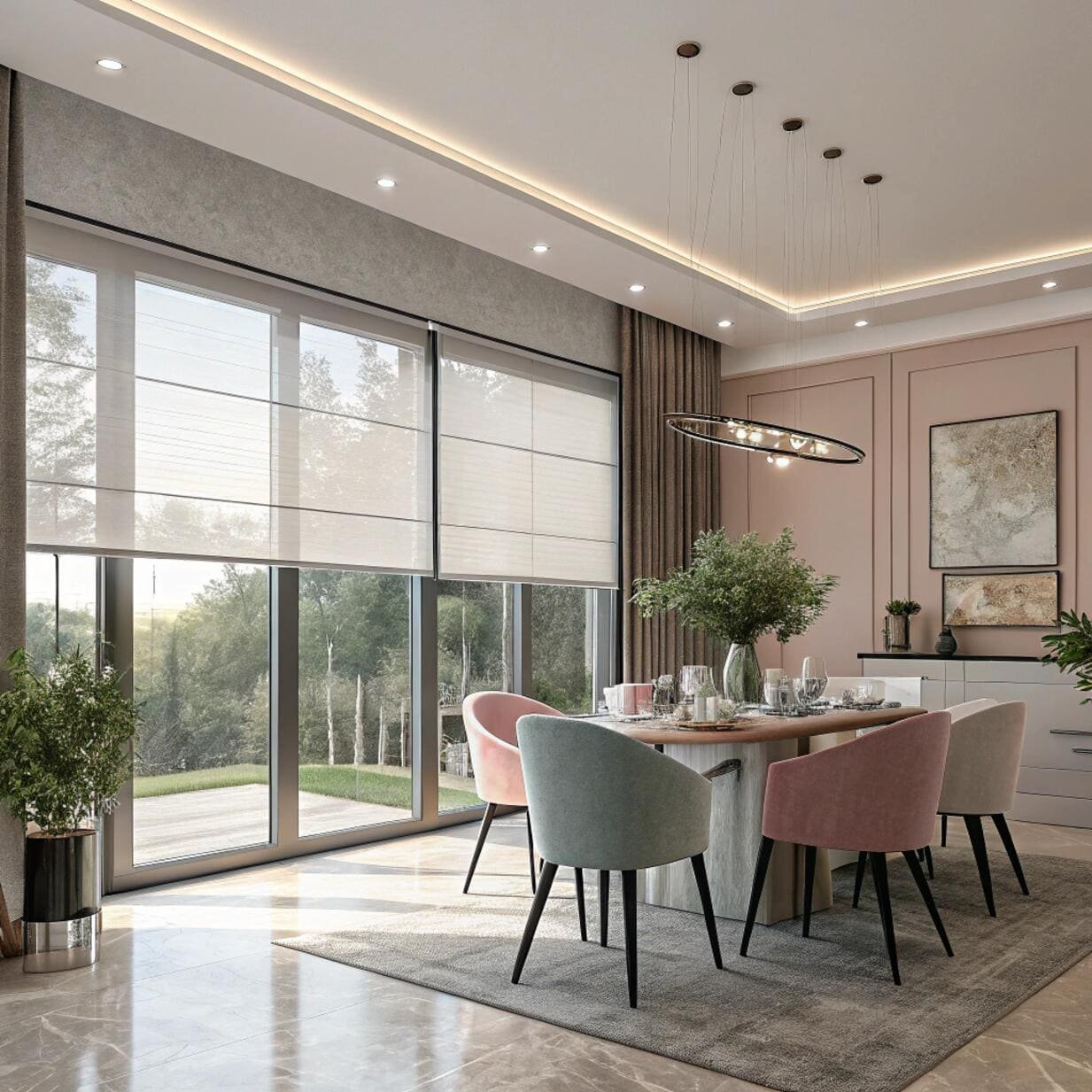
Strategic Selection Methodology for Project Success
Through systematic evaluation of over 300 successful installations, I've developed a practical decision framework that eliminates guesswork and ensures optimal outcomes for diverse project requirements.
Critical Decision Factors:
Space Functionality Assessment:
- Office environments requiring frequent light adjustment throughout workdays benefit significantly from Venetian blind precision control capabilities
- Residential bedrooms and media rooms achieve superior blackout performance with quality roller shades featuring room-darkening fabrics
- Kitchen and bathroom applications favor roller shades for moisture resistance and easy cleaning maintenance
Budget and ROI Considerations:
- Projects with 5-7 year replacement cycles find roller shades cost-effective due to lower initial investment
- Long-term installations benefit from Venetian blind durability despite 40-50% higher upfront costs
- Energy-conscious specifications should factor natural ventilation savings available through Venetian blind operation
Maintenance Resource Evaluation:
- In-house maintenance capabilities support Venetian blind selection for organizations with dedicated facilities management
- Outsourced cleaning contracts often favor roller shade simplicity and reduced service requirements
- High-traffic commercial spaces may prefer roller shade fabric replacement over frequent slat cleaning
Aesthetic Integration Requirements:
- Contemporary minimalist designs align naturally with roller shade clean lines and unobtrusive profiles
- Traditional and transitional interiors benefit from Venetian blind classic appeal and architectural enhancement
- Smart home integration projects achieve easier implementation through roller shade motorization options
The optimal choice emerges from matching system capabilities to actual project requirements rather than following general recommendations or cost considerations alone.
Conclusion
Venetian blinds and roller blinds each deliver distinct advantages for different project requirements, with success depending on matching technical capabilities to specific functional needs, aesthetic goals, and long-term value expectations.
Extended FAQ Section
What maintenance is required for venetian blinds vs roller blinds?
Venetian blinds require quarterly slat cleaning using specialized tools or professional services, with individual slat replacement possible for damage control. Regular operation of tilt mechanisms and cord systems ensures smooth functionality throughout 15-20 year service life. Dust accumulation between slats necessitates thorough cleaning but allows targeted maintenance rather than complete system replacement.
Roller blinds need minimal routine maintenance but require complete fabric replacement every 8-12 years depending on usage intensity and environmental conditions. Fabric cleaning involves gentle vacuuming or professional cleaning services, with motorized systems requiring annual battery replacement or electrical connection inspection. Overall maintenance costs favor roller blinds for simplicity but Venetian blinds for component-level serviceability and extended operational life.
How do venetian blinds and roller blinds compare for energy efficiency?
Venetian blinds provide superior energy performance through adjustable slat angles that redirect natural light deeper into rooms while blocking direct solar heat gain. Studies indicate 25-30% improved thermal performance compared to fixed fabric systems, with natural ventilation capabilities reducing HVAC loads during moderate weather conditions. Reflective coatings on aluminum slats enhance these benefits significantly.
Roller blinds contribute energy efficiency through fabric selection and complete coverage capabilities. Solar screen fabrics reduce heat gain by 65-85% while maintaining view-through properties. Blackout fabrics provide excellent insulation when closed but eliminate natural light benefits. Smart controls enable automated operation responding to temperature and light sensors, optimizing energy performance throughout daily cycles without manual intervention.
Which window treatment works better for commercial office environments?
Commercial office applications benefit from Venetian blinds due to precise light control requirements throughout varying daily conditions and individual workspace preferences. Glare reduction capabilities protect computer screens while maintaining natural light for productivity and wellness. Individual control options satisfy diverse occupant needs within open-plan environments, reducing complaints and improving satisfaction scores.
Roller blinds excel in conference rooms, reception areas, and standardized spaces where uniform appearance and simplified operation priorities exceed individual control requirements. Motorized systems enable centralized building management and scheduled operation supporting energy efficiency goals. Easy specification and installation advantages reduce project complexity and costs for large-scale commercial developments requiring multiple identical units.
Ready to Specify the Right Window Treatment for Your Next Project?
Skip the guesswork and specification delays. Get professional technical sheets, accurate pricing, and installation guidance tailored to your specific project requirements. Our window treatment specialists understand the difference between standard residential applications and demanding commercial installations.
Whether you need precise light control for executive offices or streamlined roller systems for modern residential developments, we deliver complete specifications with installation support and long-term service backing.
Contact our technical team today for comprehensive project consultation and detailed quotations based on your exact requirements.
info@velablinds.com
---
[^1]: Explore the advantages of Venetian blinds for superior light control and ventilation, ideal for various spaces.
[^2]: Learn about the importance of light control in enhancing comfort and functionality in spaces.
[^3]: Discover strategies to enhance energy efficiency in buildings, including window treatment choices.
[^4]: Explore how different blinds can enhance air quality and comfort in indoor environments.
[^5]: Explore how the right window treatments can enhance property value and client satisfaction over time.
[^6]: Learn about the key drivers of user satisfaction and how to enhance them in your projects.Partner with VelaBlinds for Your Next Project
Smart window treatments shouldn't be complicated. After working with 500+ distributors and contractors worldwide, I've streamlined the process to get you quality products, competitive pricing, and reliable support - every time.
Why project professionals choose VelaBlinds:
- ✅ Fast, Accurate Quotes - Detailed specs and pricing within 24 hours
- ✅ Transparent Pricing - No hidden fees, volume discounts clearly outlined
- ✅ Quality Assurance - Direct partnerships with certified OEM manufacturers
- ✅ Project Support - Dedicated account manager from quote to delivery
Start your next project:
📧 Quick Quote: Send your requirements to info@velablinds.com
📱 Direct Contact: WhatsApp +86 137 2012 8317
🌐 Browse Solutions: https://velablinds.com/
📁 Product Resources: Access spec sheets, catalogs & project files
Jimmy Chen, Founder
"I built VelaBlinds to solve the real challenges I faced as a project buyer - long lead times, unclear specs, and unreliable suppliers. Let's discuss how we can power your projects with smarter blinds."
Serving distributors and contractors across North America, Europe, and Australia since 2018.

